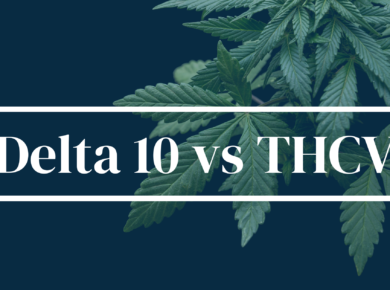The hemp and cannabis industry houses a plethora of compounds, with Delta 9-THC and CBNV being two of the most notable. These compounds, while both derived from the same source, exhibit distinct characteristics and effects on the human body.
Delta 9-THC, commonly referred to as THC, is the primary psychoactive component in cannabis, best known for the euphoric ‘high’ it induces.
In contrast, CBNV, also known as Cannabinovarin, lacks this psychoactive property. While its research is not as comprehensive as THC, preliminary studies suggest CBNV’s unique interaction with the endocannabinoid system might have potential therapeutic applications. However, it’s pivotal to note that further exploration is needed to ascertain CBNV’s full spectrum of effects and uses.
Both THC and CBNV contribute to the fascinating landscape of cannabinoids, making the journey of understanding these compounds incredibly intriguing.
Many States allow hemp derived cannabinoids under the 2018 Farm Bill as long as they contain less than .3% D9 THC. Some States have explicitly banned cannabinoids like Delta 8, so check your local rules and regulation before purchasing.
Here’s the rules for Kush.com and more details
Frequently Asked Questions (FAQs)
What is THC and its connection to hemp?
THC, short for Delta-9-Tetrahydrocannabinol, is a compound naturally present in the cannabis plant, including hemp. Renowned for its psychoactive effects, it can induce a ‘high’. But, hemp plants, by legal requirements, contain minimal THC amounts (less than 0.3% dry weight).
What is CBNV and its relation to hemp?
CBNV, or Cannabinovarin, is another compound found in the cannabis and hemp plants. Unlike THC, it’s non-psychoactive, which means no ‘high’. The exact concentration of CBNV in hemp varies, and we need more studies to truly grasp its essence.
How do THC and CBNV effects compare?
THC is famous for its psychoactive outcomes, such as euphoria and relaxation. CBNV, being non-psychoactive, doesn’t render these feelings. The precise effects of CBNV remain under study, but it seems to have a different endocannabinoid system interaction than THC.
Are both THC and CBNV present in hemp?
Indeed, both compounds exist in hemp. THC concentrations in hemp are low (under 0.3% dry weight) to meet legal criteria, while CBNV concentrations can vary.
How is hemp used to extract THC and CBNV?
Like other cannabinoids, THC and CBNV are extracted from hemp using various techniques, with CO2 extraction being predominant. Other methods include ethanol extraction and oil infusion. These extractions form the base for products like oils and edibles.
Shop
Similar Product Searches You Might Be Interested In:




